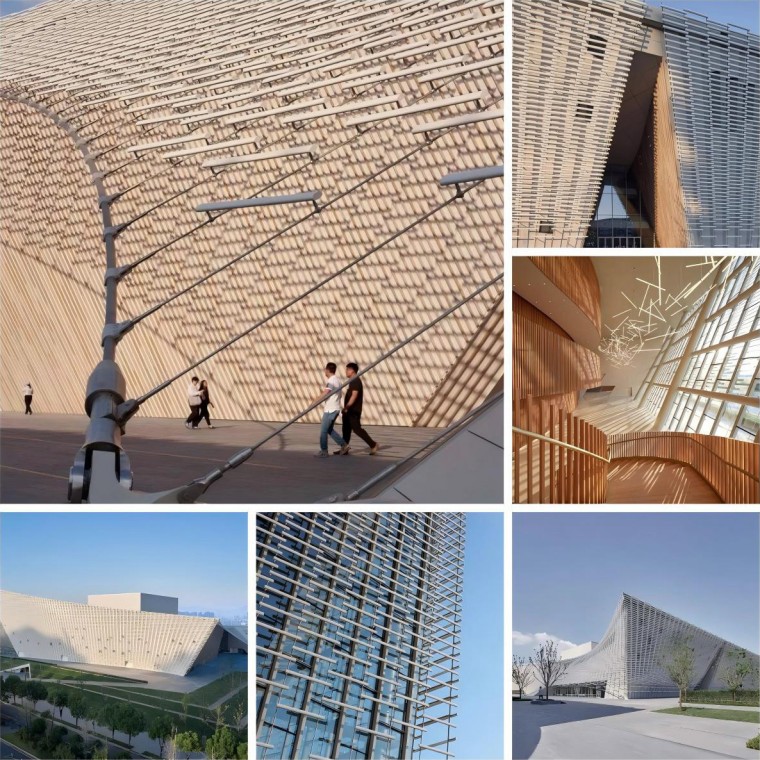

When designing a stadium, architects must balance multiple priorities: capacity, comfort, energy efficiency, safety, and visual identity. In the era o...
большеThe Language of Color in Architecture Tiến Bộ Plaza demonstrates how thoughtful color strategy can elevate a building into a civic landmark. The facad...
большеWhy Terracotta Mosaic Tiles Are Leading the Texture Trend in Modern Design As architects and interior designers increasingly gravitate toward natural ...
большеThe use of terracotta in the Nanchang Poly Grand Theatre goes beyond simple decorative aesthetics. The material has been used in a bold, new way, honoring the region's legacy while elevating it through technology and design. The terracotta baguettes and louvers are a modern interpretation of the centuries-old ceramic traditions of Jingdezhen, renowned for producing exquisite porcelain.
Drawing inspiration from Linglong porcelain, a traditional craft from Jingdezhen, the terracotta baguettes in the theatre represent a fusion of ancient artistry and contemporary architectural language. The strategic placement of these elements transforms the exterior into a dynamic façade that is as functional as it is beautiful.
The design of the terracotta baguettes pays homage to the cultural significance of ceramics in Jiangxi. The unique texture, translucent quality, and the way sunlight interacts with the façade echo the deep-rooted ceramic culture, turning the building into an architectural piece of art. The play of light filtering through the terracotta elements creates an ever-changing visual experience that adds depth and complexity to the structure.
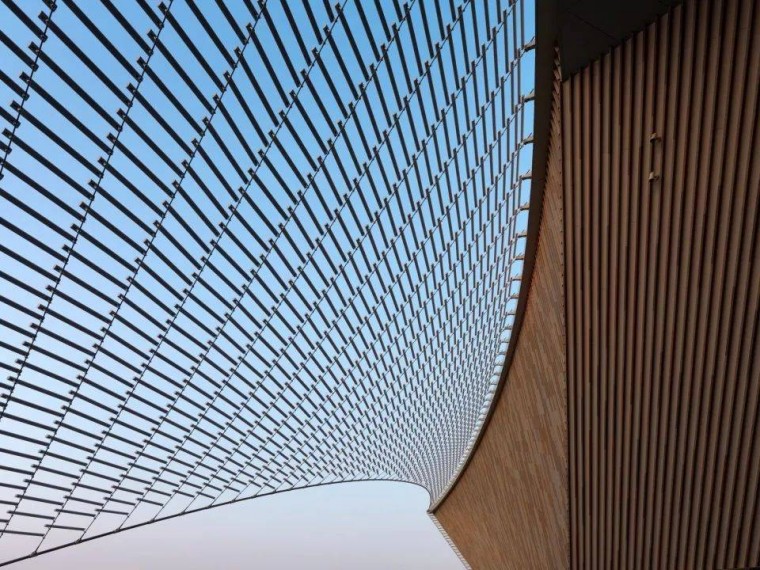
Beyond their cultural and aesthetic value, the terracotta baguettes and louvers serve essential functional purposes in the theatre’s design. They are integral to controlling light, temperature, and sound, contributing to the overall sustainability of the building.
With a 55% comprehensive shading coefficient, the terracotta louvers effectively regulate sunlight, reducing the need for artificial cooling in the building. The design ensures that the theatre remains comfortable year-round by allowing natural light to filter in while blocking excess heat. This energy-efficient system contributes significantly to the building’s overall sustainability and helps lower operational costs.
The strategic placement of terracotta baguettes also enhances the acoustic properties of the theatre. With a sound absorption coefficient of 0.85 at 0.7-1.2kHz, the ceramic elements work as part of the building’s soundproofing system, improving the quality of performances and creating an optimal auditory environment.
The interplay between light and shadow created by the terracotta baguettes not only adds to the building’s visual allure but also contributes to its thermal performance. The façade helps reduce the internal temperature difference by 8°C, offering natural cooling in warmer months and reducing energy consumption.
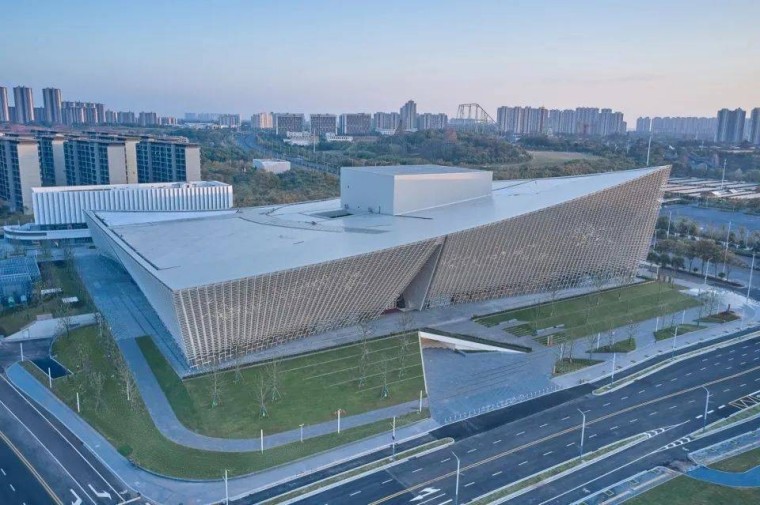
One of the most groundbreaking aspects of the Nanchang Poly Grand Theatre’s design is its integration of BIM technology and digital installation systems, which helped achieve unprecedented precision and efficiency in the assembly of the terracotta components.
By using laser-sintered 3D printing for molds and BIM (Building Information Modeling) for design and installation planning, the construction team minimized errors and ensured the precise placement of each terracotta baguette and louver. The use of robotic technology further enhanced the speed and safety of high-altitude installations, demonstrating a significant leap in modern construction techniques.
A noteworthy aspect of the installation process was the use of drone swarm positioning technology, which allowed for millimeter-level accuracy in positioning over 28,000 connection points. This technological innovation ensured that the installation process was both fast and precise, setting a new standard in architectural construction.
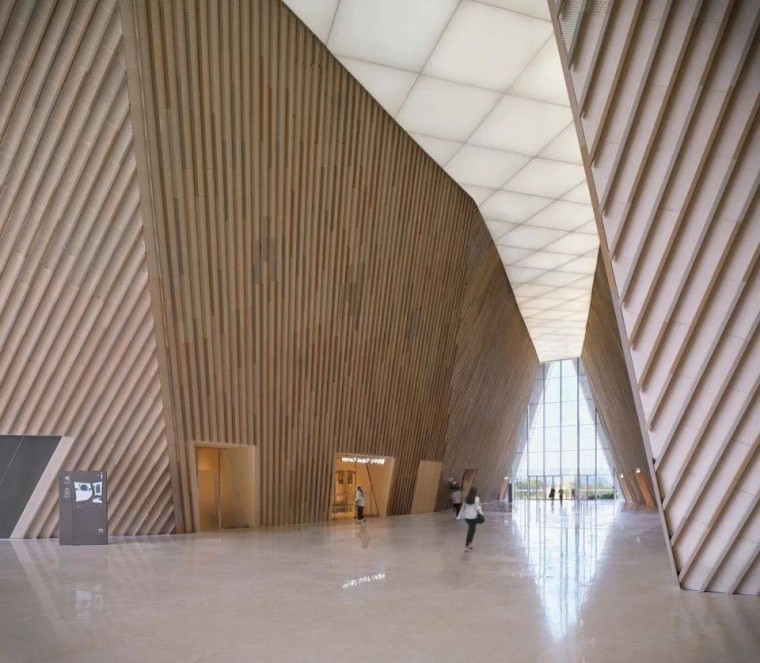
Incorporating environmentally friendly materials into the design was a key goal of the Nanchang Poly Grand Theatre. The terracotta baguettes and louvers not only serve as artistic and functional elements but also contribute to the building’s sustainability.
The terracotta components were made using 32% locally sourced clay from sediment in Poyang Lake, a significant reduction in the carbon footprint. This choice of material highlights the commitment to reducing environmental impact while also supporting the local economy.
The self-cleaning glaze applied to the terracotta elements reduces maintenance costs and prolongs the lifespan of the building. The use of titanium dioxide coating ensures that pollution adhesion is minimized, making the façade more resistant to environmental wear and tear.
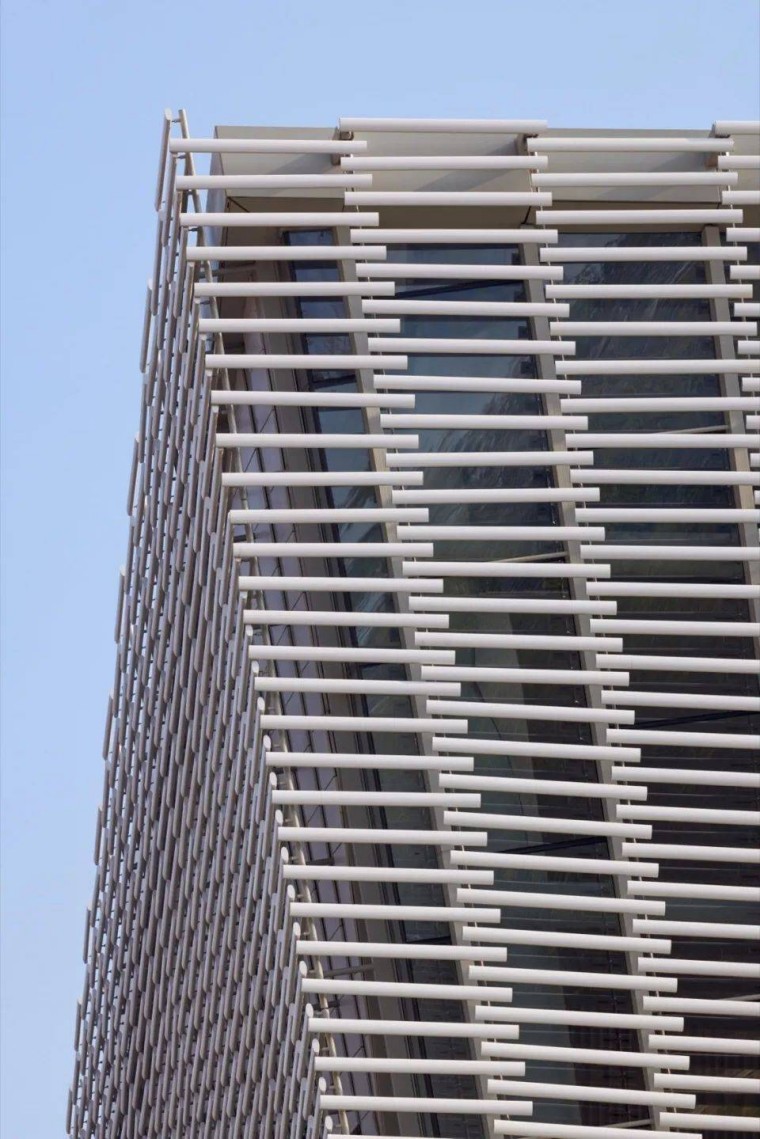
The Nanchang Poly Grand Theatre has become a defining feature of the city’s skyline, not just as a cultural venue but also as a symbol of architectural innovation. The use of terracotta baguettes and louvers has redefined the city’s approach to blending traditional cultural elements with modern functionality.
The theatre’s use of terracotta is groundbreaking in its combination of modern design principles and traditional material craftsmanship. It sets a new standard for how ceramic elements can be integrated into large-scale architectural projects.
By embracing local ceramic traditions while pushing the boundaries of modern architecture, the theatre preserves Jiangxi’s rich ceramic culture and showcases its relevance in the modern world. The building stands as a beacon of cultural heritage and architectural innovation.
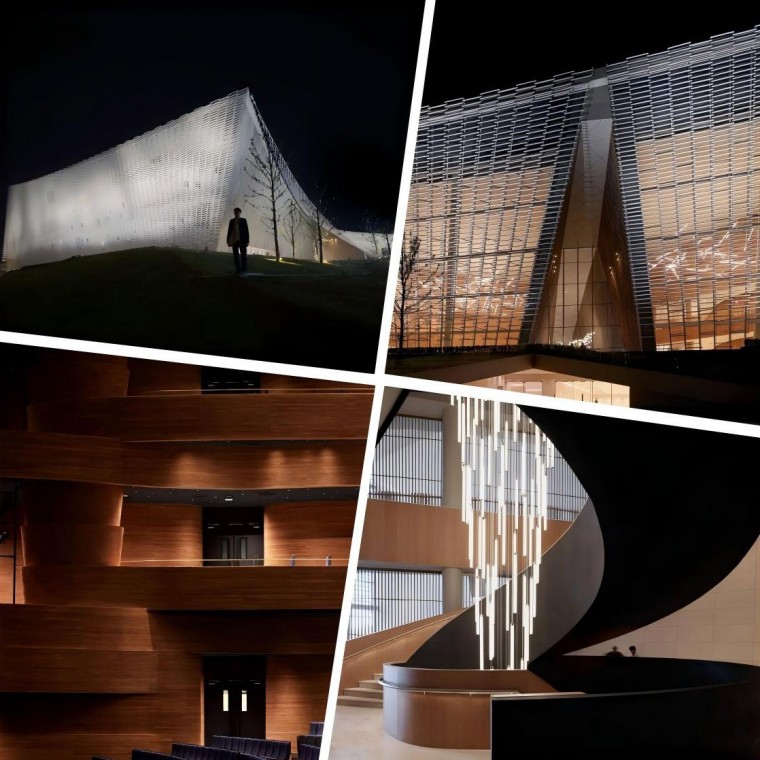
The Nanchang Poly Grand Theatre is a remarkable example of how traditional materials can be integrated into contemporary architecture to create a sustainable, functional, and aesthetically powerful building. Through the use of terracotta baguettes and louvers, the building not only pays tribute to the region’s cultural heritage but also sets new standards in architectural design and technology. As the theatre continues to inspire architects and designers, it represents the future of building design—one where functionality, sustainability, and cultural identity seamlessly coexist.
In China, the following manufacturers design and produce terracotta baguettes (terracotta louvers) for reference:
